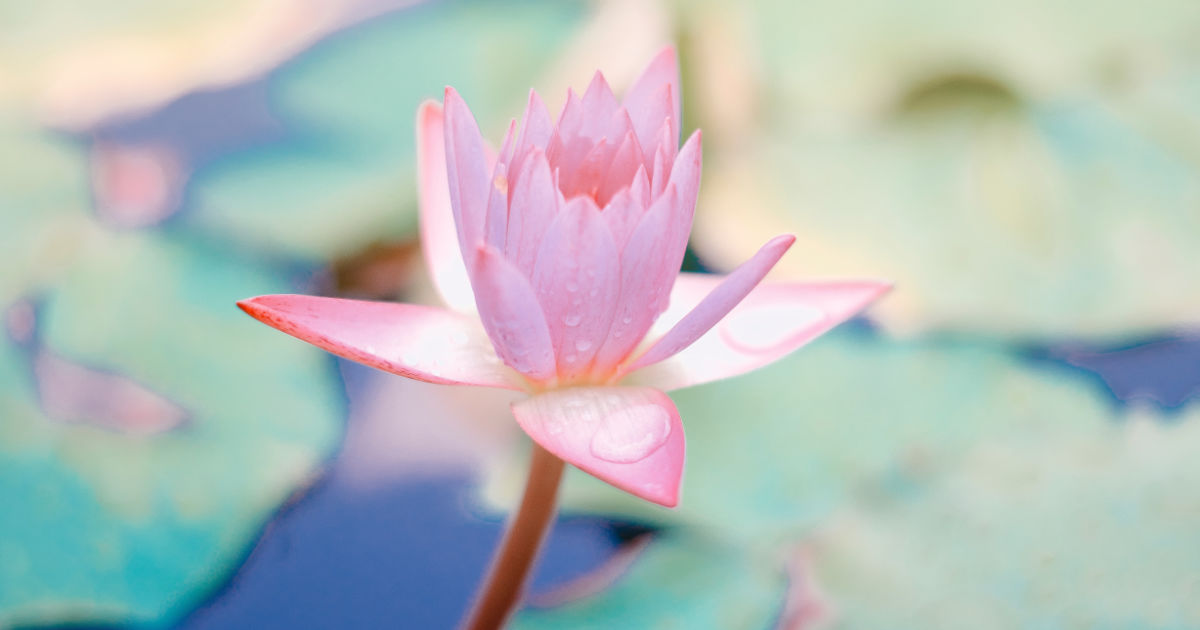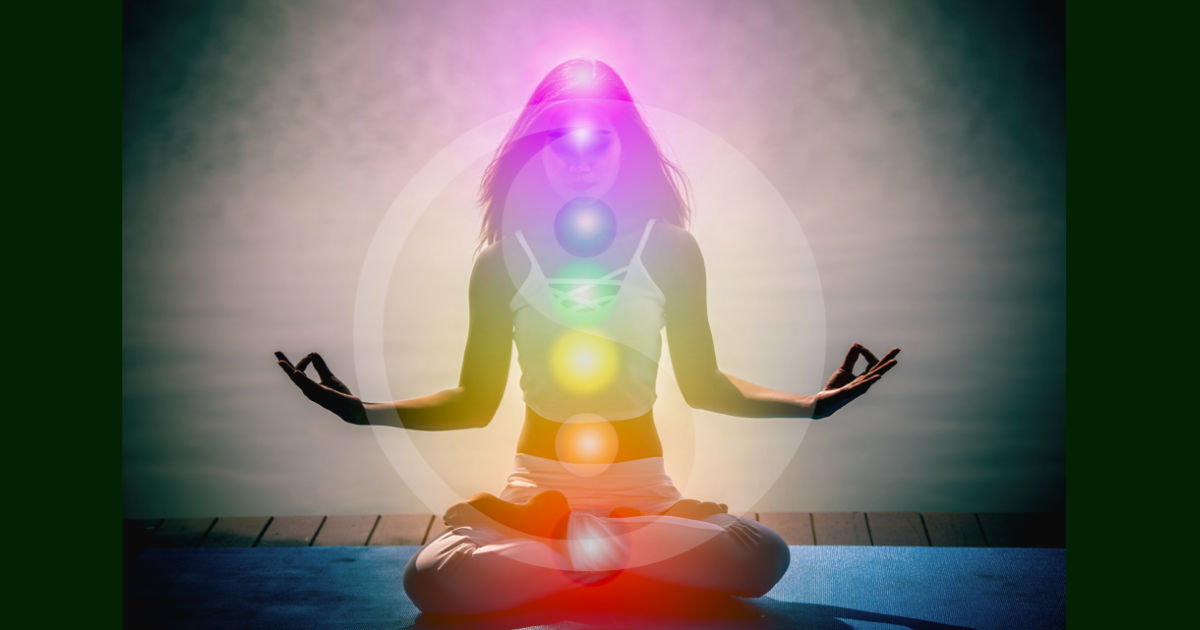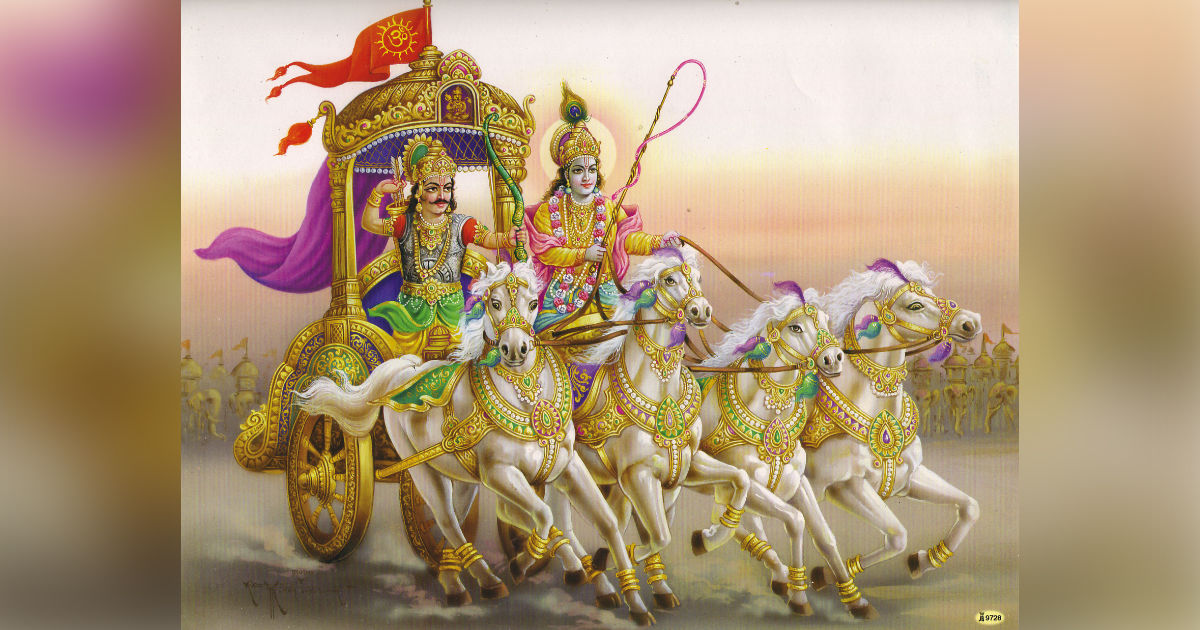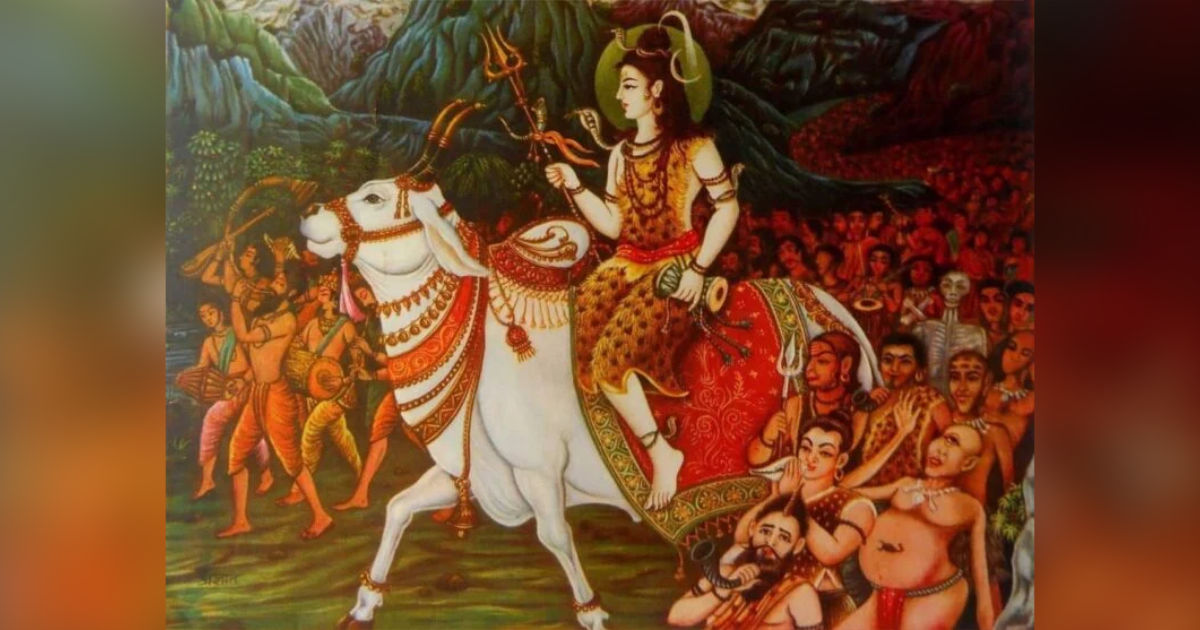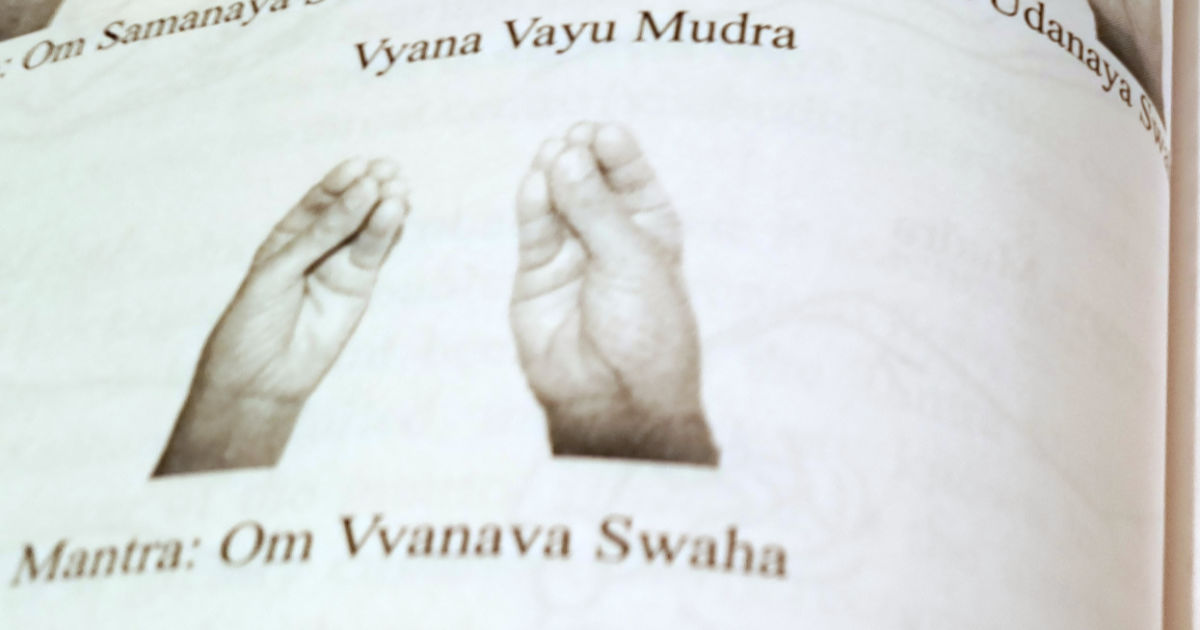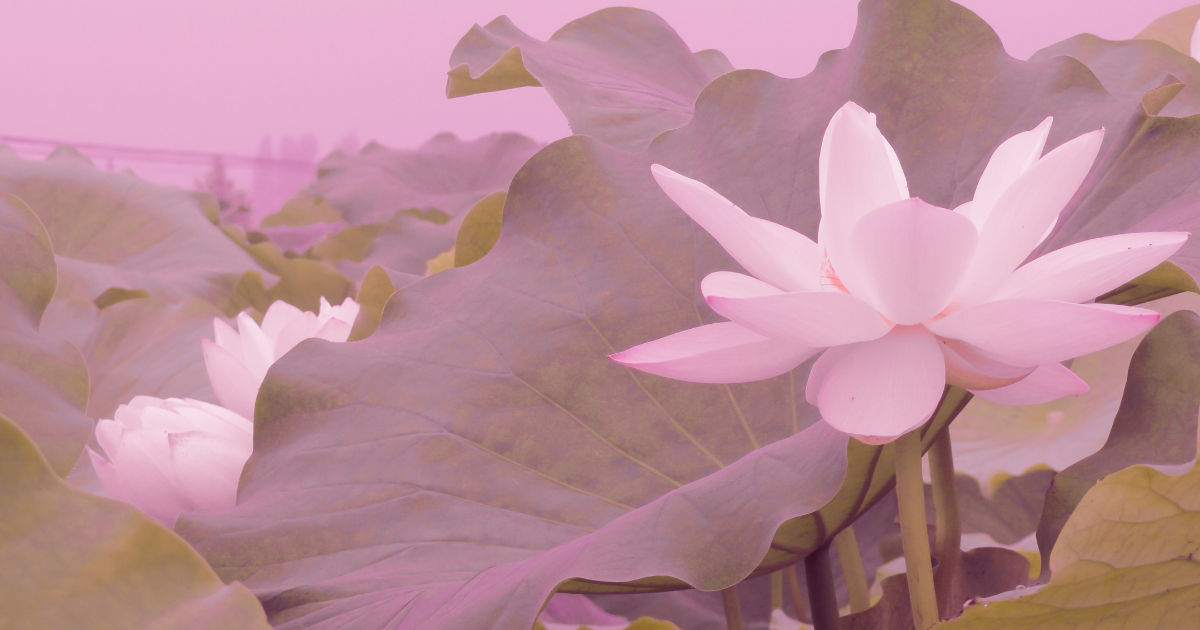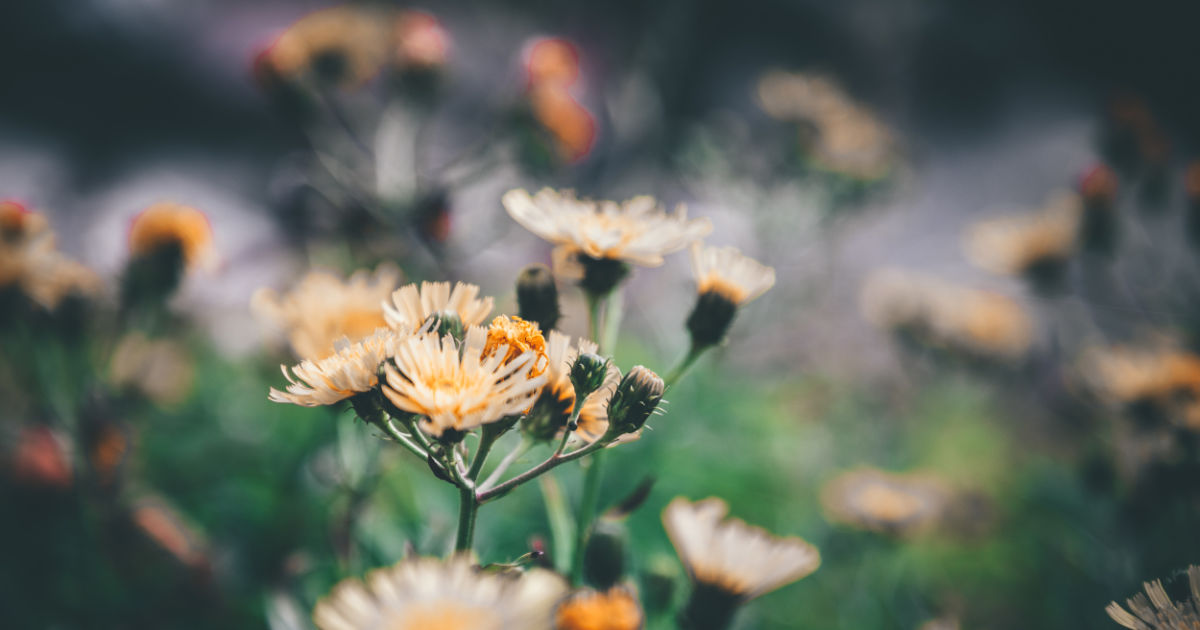My question has been answered and I will share the answer with you dear ones. In our scriptures, the Gods always pray to the Cosmic Mother, who is Maha Devi. I have always believed and venerated the Cosmic Mother as the creator. Continue reading
Tag Archives: tamas
737 – What do gunas represent in Gods
The trishul in Shiva’s right hand represents the three Gunas – Sattva, Rajas and Tamas. It is his emblem of sovereignty. He rules the universe through these three gunas. The damaru in his left hand represents the Sabda Brahmin (transcendental sound). Continue reading
734 – What are the 3 types of happiness?
In the Bhagavad Gita.
Lord Krishna said that there are three types of happiness and spontaneous bliss through the gunas. The gunas comprise the reason of our existence. Continue reading
714 – Be thankful
Dear ones, be thankful for what we are, what we have and what we can give. I came home after my surgery on Sunday, which was the beginning of Navratri. It is a joyous time as before that we had been observing Pitrapaksh. Seeking forgiveness for our ancestors. Before leaving the hospital, I was able to play my chants in my room. Continue reading
688 – Which comes first?
Which comes first? Desire or anger? Desire is an intense feeling of wanting, possessing. Anger is rage, fury, wrath. Desire can be converted into anger.
Arjuna asked Krishna, how have desire and anger come into existence? What makes them grow? What is their nature and what is their role? How are they born? What is the cause of their growth? What is their nature? What is their effect, when they are full blown? Continue reading
583 – Accept and respect your body and soul
Guna means virtue and each one of us is blessed with three gunas. They emerge from Prakriti creating the essential aspects of all nature—matter, energy and consciousness. These are tamas (darkness and chaos), rajas (activity and passion) and sattva (beingness and harmony). These gunas are constantly in flux and they are responsible for creating maya (illusion). As human beings we can consciously alter our levels of gunas in our body and mind. Continue reading
458 – Promise yourself to remain well
It is a sweeping statement. However, it is possible. Our body is made up of five basic elements – the panch tattva. The five fingers of our hands are regarded as representative symbols of the panch tattvas. Continue reading
423 – Lotus, the favourite flower of Gods
The lotus is the most powerful symbol of spirituality, beauty, fertility and prosperity. According to Hinduism within each of us is the spirit of the lotus. It is the Anahata chakra or Hrit Padma (heart-lotus), which is the gateway to our soul. The Anahata chakra is described as blue. Continue reading
420 – Visualization
Modifications in our consciousness.
“Each day watch the colors of your mind.
Until the light shines clearly
And you see straight through
The craving of your senses.
Thus, you will win freedom from experiences
Which carves you to its form
Release from desire which eats you from within.” Swami Satyananda Saraswati.
In Hinduism, colors play a very significant role. Some of the main colors are red, yellow (turmeric), green from leaves and white from wheat flour.
The meaning of the colors
Red is the color used most frequently for auspicious occasions like marriages, birth of a child, festivals, etc. A red mark is put on the forehead during ceremonies and important situations. As a sign of marriage, women put red powder (sindhoor made from turmeric and lime juice) in their hair parting. Red powder is applied to statues of deities, during prayers. It is also the color of Shakti’s strength. A red dress is put on Gods who are charitable, merciful and protective against evil. A married Indian woman is wrapped in red, when she is cremated.
Saffron expresses fire, abstinence and celibacy. Wearing this color also means searching for the light.
Green characterizes peace and happiness.
Yellow is the color of knowledge and learning and it symbolizes happiness, peace and meditation.
White is a mixture of seven colors, and therefore depicts the qualities of each color. It typifies purity and cleanliness. It is also the color of mourning for Hindus. The deities always have a little bit of white on their clothes.
Blue is a color which is everywhere in nature. It is a color which demonstrates stability and strong character. Rama and Krishna are colored blue because they protected mankind against evil.
Violet is associated with oneness with God, peace and wisdom. The lotus flower is of many colors but violet is considered the most sacred.
Last but not least, black is a color which is used to ward of the evil eye. According to Astrology if you wish to harmonize the planetary influences, then black is the color to be worn on Saturday. Black color is offered to the fiercest form of mother. In this color she absorbs everything that she has created.
The colors of the gunas
Prakriti, the Goddess is described as having three gunas. Purity, passion and inertia. Knowledge arises from Sattwa; greed from Rajas; delusion, heedlessness and ignorance arise from Tamas. The Gunas are represented by three colors, Sattwa is harmony and purity, and is therefore white. Rajas is energy and passion and is rendered as red. Tamas is inertia and ignorance and is depicted as Black.
A special visualization for you, before you get out of bed.
Close your eyes. Breathe in and out of your nostrils eleven time. Now visualize your breath, while inhaling going in through both nostrils and meeting at the eyebrow center. While exhaling visualize the breath descending form the eyebrow center out of both the nostrils. This is triangular breathing. Do this fifty-four times. See a color in the Chidakasha, the space behind the eyebrow center. Ten minutes stay with the color, if the color changes, no worry. End the practice with becoming aware of the normal breathing process.
All the colors are very powerful in their energy. Do not push to see a particular color.
Aim Hrim Klim
368 – Forgiveness
What do we know about forgiveness? It is a word used freely and frankly. We say sorry at the drop of a hat. Do we really feel sorry or is it just a word? How does one feel, when one says it. For most of us it is like saying have a nice day. If one says sorry with real emotion, then one will feel a change within oneself. Sorry is used in sarcasm, and it is expressed as a sneer. Continue reading
332 – The Maya Tree
The Maya tree sprouts out of the seed from the vrittis (modification) of the mind. In the soil of enjoyments of the world, attachment, and desire water the Maya tree of illusion. Karmas are the fruits while lust, anger and greed are its sprouts. Continue reading
324 – Vaishnava Tantra
Vishnu is worshipped in Vaishnava Tantra. He is the preserver of the world. He is said to manifest in human form in every era (Yuga), to relieve the world from suffering by evil persons, who being destroyed by him also attain their moksha. In Sattva, his Narayana form, in Rajas, his Narsimhan form, and in Tamas, his Varaha form is worshipped. Continue reading
295 – Oh dear, what is my predominant guna?
We have three gunas. Gunas are traits with which each one of us is born with. Tamas is being dull and immovable like a rock. Rajas is being ambitious and egotistical. Sattwa is being rational, and non judgemental. Continue reading
241 – Vedic worship of the Goddess
…as described in Devi Gita.
The Goddess explains the first kind of vedic worship to her devotees. Continue reading
213 – Namaste Navratri and Summer Solestice
We all have to join together and rid the universe of evil and destruction. In the Shastras it is written that the easiest way to experience God in these troubled and turbulent times is by worship. We need not go into a complicated philosophical discussion. All we have to do is to bow our heads before the deity, who is greater than any other power of the world. Aradhana (prayer) starts from this act and progresses gradually towards bliss and love. Begin with the deity, one loves and adores (it can be the elements, chakras, and yantras), and one rises progressively above the form and merges into the supreme atman. Continue reading

